-
 Bitcoin
Bitcoin $95,423.5489
1.59% -
 Ethereum
Ethereum $1,828.0180
3.38% -
 Tether USDt
Tether USDt $1.0003
0.00% -
 XRP
XRP $2.3004
1.29% -
 BNB
BNB $603.6164
0.28% -
 Solana
Solana $149.4731
1.86% -
 USDC
USDC $1.0001
0.01% -
 Dogecoin
Dogecoin $0.1794
2.04% -
 Cardano
Cardano $0.7119
2.01% -
 TRON
TRON $0.2459
-0.47% -
 Sui
Sui $3.5867
0.97% -
 Chainlink
Chainlink $14.9743
1.47% -
 Avalanche
Avalanche $22.1170
1.77% -
 Stellar
Stellar $0.2812
-0.84% -
 UNUS SED LEO
UNUS SED LEO $8.9947
0.15% -
 Toncoin
Toncoin $3.2454
0.43% -
 Shiba Inu
Shiba Inu $0.0...01375
1.35% -
 Hedera
Hedera $0.1897
-1.06% -
 Bitcoin Cash
Bitcoin Cash $371.1005
6.87% -
 Polkadot
Polkadot $4.2469
1.38% -
 Litecoin
Litecoin $86.9207
2.28% -
 Hyperliquid
Hyperliquid $18.9965
9.35% -
 Dai
Dai $1.0001
0.01% -
 Bitget Token
Bitget Token $4.3928
-0.09% -
 Monero
Monero $271.9814
4.74% -
 Ethena USDe
Ethena USDe $0.9996
0.01% -
 Pi
Pi $0.5854
-4.43% -
 Pepe
Pepe $0.0...09138
4.32% -
 Aptos
Aptos $5.5801
0.37% -
 Uniswap
Uniswap $5.3755
-0.75%
What is Reorg?
Reorgs in blockchain can lead to transaction delays and double-spending; waiting for multiple confirmations can minimize their impact.
Apr 08, 2025 at 11:08 pm
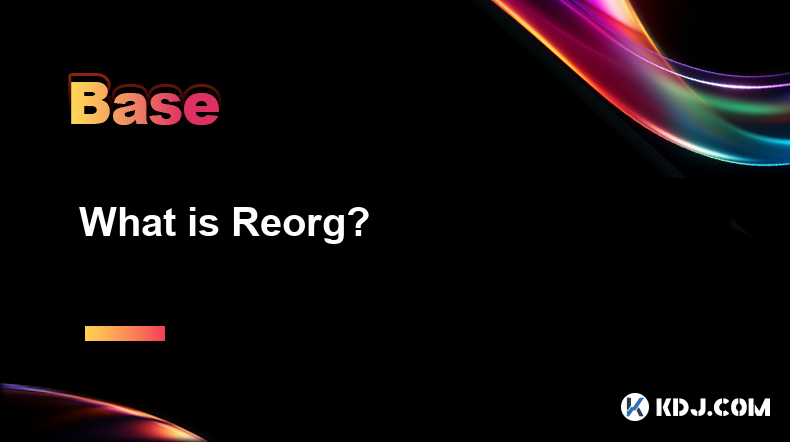
What is Reorg?
In the world of cryptocurrencies, particularly those that operate on blockchain technology, the term Reorg or Blockchain Reorganization is a critical concept that users and developers need to understand. A reorg refers to a situation where the blockchain undergoes a reorganization of its blocks, which can lead to changes in the accepted version of the blockchain. This phenomenon is more common in cryptocurrencies that use Proof of Work (PoW) consensus mechanisms, such as Bitcoin and Ethereum (before its transition to Proof of Stake).
How Does a Reorg Occur?
A reorg happens when a blockchain network discovers a longer or more valid chain of blocks than the current accepted chain. This can occur due to several reasons, including network latency, where some nodes on the network receive and process transactions at different times. When a longer chain is discovered, the network will typically switch to this new chain, causing the previously accepted blocks to be orphaned or discarded. This process ensures that the blockchain maintains the longest valid chain, which is a fundamental principle of PoW systems.
Types of Reorgs
There are primarily two types of reorgs: short reorgs and long reorgs. Short reorgs are more common and typically involve only a few blocks. They are usually resolved quickly and have minimal impact on the network. Long reorgs, on the other hand, involve a significant number of blocks and can have more severe consequences, such as double-spending attacks or loss of trust in the network.
Impact of Reorgs on Transactions
When a reorg occurs, transactions that were included in the orphaned blocks may be temporarily invalidated. If a transaction is included in a block that gets orphaned, it will need to be rebroadcast and included in a new block. This can lead to delays in transaction confirmation and potential issues with double-spending, where an attacker attempts to spend the same cryptocurrency twice.
Preventing and Mitigating Reorgs
While reorgs are a natural part of blockchain operations, there are strategies to minimize their impact. One approach is to wait for multiple confirmations before considering a transaction final. For example, in Bitcoin, waiting for six confirmations is often recommended to ensure the transaction is secure. Additionally, developers can implement better network synchronization protocols to reduce the likelihood of reorgs.
Examples of Reorgs in Cryptocurrency
Several notable reorgs have occurred in the cryptocurrency space. One of the most famous examples is the Ethereum Classic 51% attack in January 2019, where attackers managed to reorganize the blockchain and double-spend a significant amount of cryptocurrency. Another example is the Bitcoin Cash hard fork in November 2018, which led to a temporary split in the blockchain and subsequent reorgs as the network stabilized.
Technical Details of a Reorg
To understand the technical aspects of a reorg, it's essential to delve into how blocks are validated and added to the blockchain. When a miner solves a block, it is broadcast to the network, and other nodes verify its validity. If the block is valid, it is added to the blockchain. However, if another miner solves a competing block at the same time, a temporary fork can occur. The network will eventually choose the longest valid chain, leading to a reorg if the competing chain becomes longer.
Reorgs and Consensus Mechanisms
Reorgs are more prevalent in PoW systems due to the nature of mining and the potential for competing chains. In contrast, Proof of Stake (PoS) systems, like Ethereum 2.0, are designed to be more resistant to reorgs. In PoS, validators are chosen to create new blocks based on the amount of cryptocurrency they hold and are willing to "stake" as collateral. This reduces the likelihood of competing chains and makes reorgs less common.
Reorgs and Network Security
The occurrence of reorgs can be an indicator of the health and security of a blockchain network. Frequent reorgs may suggest issues with network synchronization or potential attacks. Conversely, a well-functioning network with minimal reorgs indicates a robust and secure system. Monitoring reorgs and understanding their causes can help developers and users maintain the integrity of the blockchain.
Reorgs and User Experience
For users of cryptocurrencies, reorgs can be confusing and frustrating, especially if they lead to transaction delays or double-spending issues. Educating users about the nature of reorgs and the importance of waiting for multiple confirmations can help manage expectations and improve the overall user experience. Additionally, wallet and exchange providers can implement safeguards to protect users from the negative impacts of reorgs.
Frequently Asked Questions
Q: Can reorgs be completely prevented?
A: While reorgs cannot be entirely prevented due to the decentralized nature of blockchain networks, their impact can be minimized through strategies like waiting for multiple confirmations and improving network synchronization.
Q: How do reorgs affect the price of a cryptocurrency?
A: Reorgs can lead to temporary volatility in the price of a cryptocurrency, especially if they are perceived as a sign of network instability or potential attacks. However, the long-term impact on price depends on various factors, including the overall health of the network and market sentiment.
Q: Are reorgs more common in smaller cryptocurrencies?
A: Yes, reorgs can be more common in smaller cryptocurrencies due to lower network hash rates and less robust infrastructure. Smaller networks are more susceptible to 51% attacks, which can lead to reorgs.
Q: How can developers detect and respond to reorgs?
A: Developers can use blockchain explorers and monitoring tools to detect reorgs in real-time. Upon detection, they can analyze the cause of the reorg and implement necessary adjustments to the network protocol or consensus mechanism to prevent future occurrences.
Disclaimer:info@kdj.com
The information provided is not trading advice. kdj.com does not assume any responsibility for any investments made based on the information provided in this article. Cryptocurrencies are highly volatile and it is highly recommended that you invest with caution after thorough research!
If you believe that the content used on this website infringes your copyright, please contact us immediately (info@kdj.com) and we will delete it promptly.
- Bitcoin Solaris (BTC-S) Leverages Hybrid Mining and Inclusive Design to Empower the Next Generation of Wealth Builders
- 2025-04-30 02:40:12
- The Best Crypto Presale Scene: Introducing Dawgz AI ($DAGZ)
- 2025-04-30 02:40:12
- JUST DAO Partners with DWF Labs to Boost Liquidity, Market Infrastructure, and Ecosystem Growth
- 2025-04-30 02:35:13
- Turn Dogecoin into a Stable Daily Income Without the Hassle of Traditional Mining
- 2025-04-30 02:35:13
- Bonk (BONK) Price Surges 59.32%, Leaving Meme Coins in the Dust
- 2025-04-30 02:30:12
- Fartcoin (FARTCOIN) faces potential downward pressure ahead of the launch of Coldware (COLD)
- 2025-04-30 02:30:12
Related knowledge

What is a Merkle tree? What role does it play in blockchain?
Apr 29,2025 at 07:42am
A Merkle tree, also known as a hash tree, is a data structure used to efficiently verify the integrity and consistency of large sets of data. In the context of blockchain, Merkle trees play a crucial role in ensuring the security and efficiency of the network. This article will explore what a Merkle tree is, how it works, and its specific role in blockc...
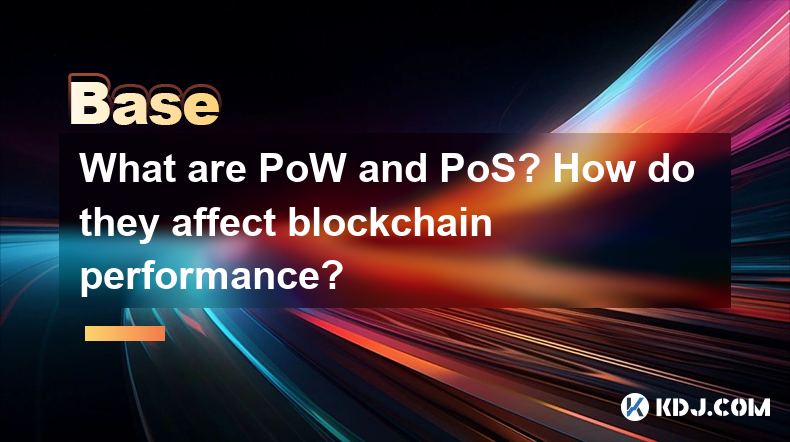
What are PoW and PoS? How do they affect blockchain performance?
Apr 28,2025 at 09:21am
Introduction to PoW and PoSIn the world of cryptocurrencies, the terms Proof of Work (PoW) and Proof of Stake (PoS) are frequently mentioned due to their critical roles in securing and maintaining blockchain networks. Both mechanisms are used to validate transactions and add them to the blockchain, but they operate on different principles and have disti...
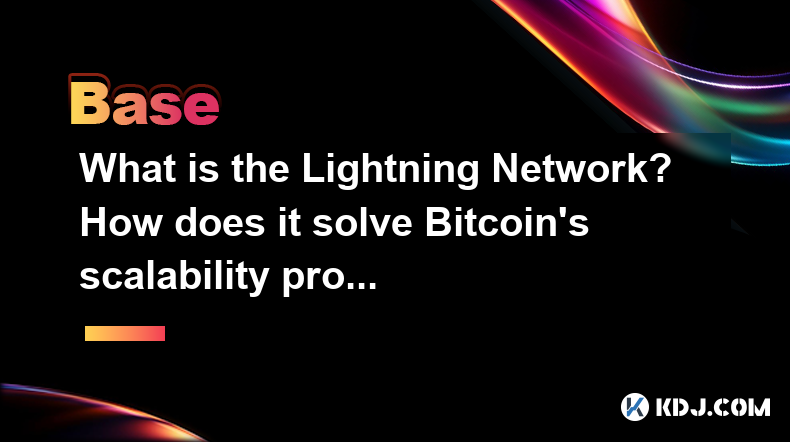
What is the Lightning Network? How does it solve Bitcoin's scalability problem?
Apr 27,2025 at 03:00pm
The Lightning Network is a second-layer solution built on top of the Bitcoin blockchain to enhance its scalability and transaction speed. It operates as an off-chain network of payment channels that allow users to conduct multiple transactions without the need to commit each transaction to the Bitcoin blockchain. This significantly reduces the load on t...
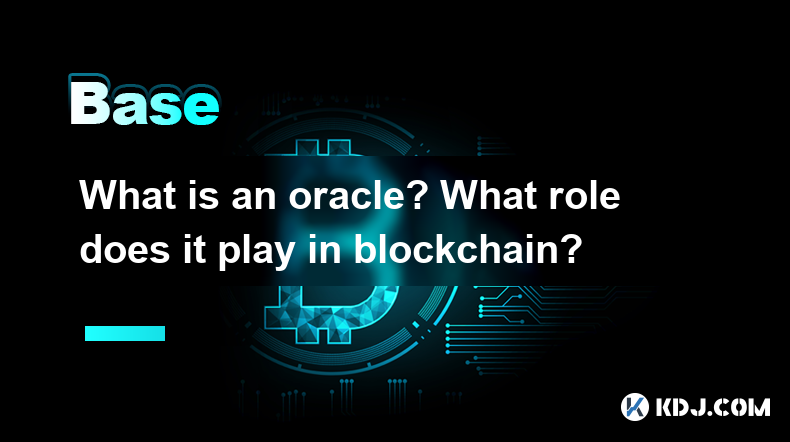
What is an oracle? What role does it play in blockchain?
Apr 29,2025 at 10:43am
An oracle in the context of blockchain technology refers to a service or mechanism that acts as a bridge between the blockchain and external data sources. It is essential because blockchains are inherently isolated systems that cannot access external data directly. By providing this connection, oracles enable smart contracts to execute based on real-wor...
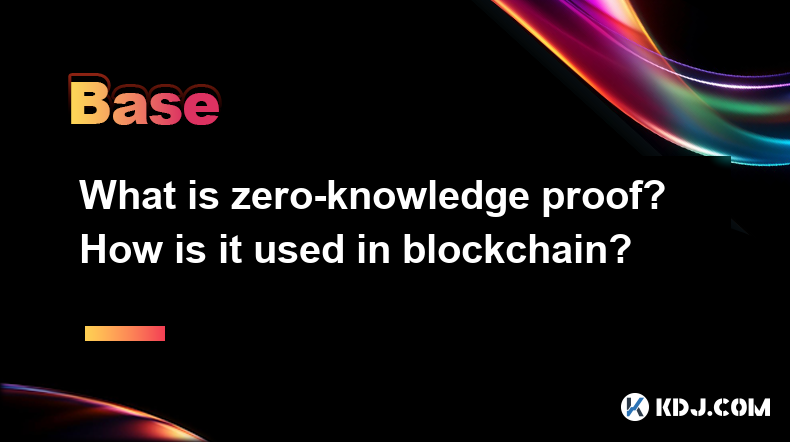
What is zero-knowledge proof? How is it used in blockchain?
Apr 27,2025 at 01:14pm
Zero-knowledge proof (ZKP) is a cryptographic method that allows one party to prove to another that a given statement is true, without conveying any additional information apart from the fact that the statement is indeed true. This concept, which emerged from the field of theoretical computer science in the 1980s, has found significant applications in t...
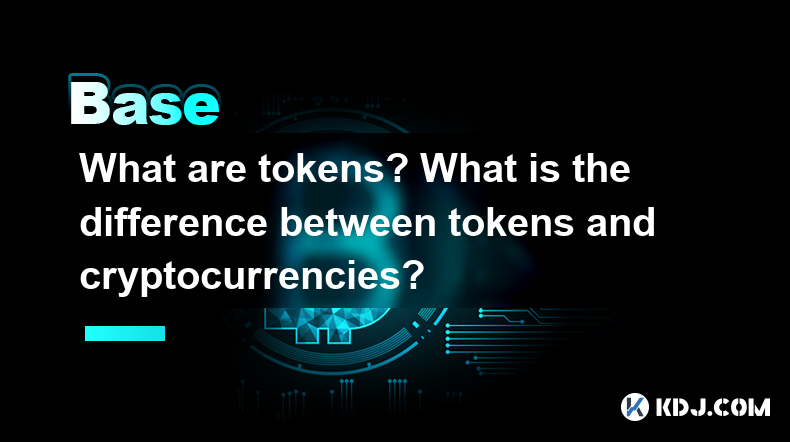
What are tokens? What is the difference between tokens and cryptocurrencies?
Apr 29,2025 at 07:49am
Tokens and cryptocurrencies are both integral parts of the blockchain ecosystem, yet they serve different purposes and have distinct characteristics. In this article, we will explore the concept of tokens, delve into the differences between tokens and cryptocurrencies, and provide a comprehensive understanding of their roles within the crypto space. Wha...

What is a Merkle tree? What role does it play in blockchain?
Apr 29,2025 at 07:42am
A Merkle tree, also known as a hash tree, is a data structure used to efficiently verify the integrity and consistency of large sets of data. In the context of blockchain, Merkle trees play a crucial role in ensuring the security and efficiency of the network. This article will explore what a Merkle tree is, how it works, and its specific role in blockc...

What are PoW and PoS? How do they affect blockchain performance?
Apr 28,2025 at 09:21am
Introduction to PoW and PoSIn the world of cryptocurrencies, the terms Proof of Work (PoW) and Proof of Stake (PoS) are frequently mentioned due to their critical roles in securing and maintaining blockchain networks. Both mechanisms are used to validate transactions and add them to the blockchain, but they operate on different principles and have disti...

What is the Lightning Network? How does it solve Bitcoin's scalability problem?
Apr 27,2025 at 03:00pm
The Lightning Network is a second-layer solution built on top of the Bitcoin blockchain to enhance its scalability and transaction speed. It operates as an off-chain network of payment channels that allow users to conduct multiple transactions without the need to commit each transaction to the Bitcoin blockchain. This significantly reduces the load on t...

What is an oracle? What role does it play in blockchain?
Apr 29,2025 at 10:43am
An oracle in the context of blockchain technology refers to a service or mechanism that acts as a bridge between the blockchain and external data sources. It is essential because blockchains are inherently isolated systems that cannot access external data directly. By providing this connection, oracles enable smart contracts to execute based on real-wor...

What is zero-knowledge proof? How is it used in blockchain?
Apr 27,2025 at 01:14pm
Zero-knowledge proof (ZKP) is a cryptographic method that allows one party to prove to another that a given statement is true, without conveying any additional information apart from the fact that the statement is indeed true. This concept, which emerged from the field of theoretical computer science in the 1980s, has found significant applications in t...

What are tokens? What is the difference between tokens and cryptocurrencies?
Apr 29,2025 at 07:49am
Tokens and cryptocurrencies are both integral parts of the blockchain ecosystem, yet they serve different purposes and have distinct characteristics. In this article, we will explore the concept of tokens, delve into the differences between tokens and cryptocurrencies, and provide a comprehensive understanding of their roles within the crypto space. Wha...
See all articles





















































































